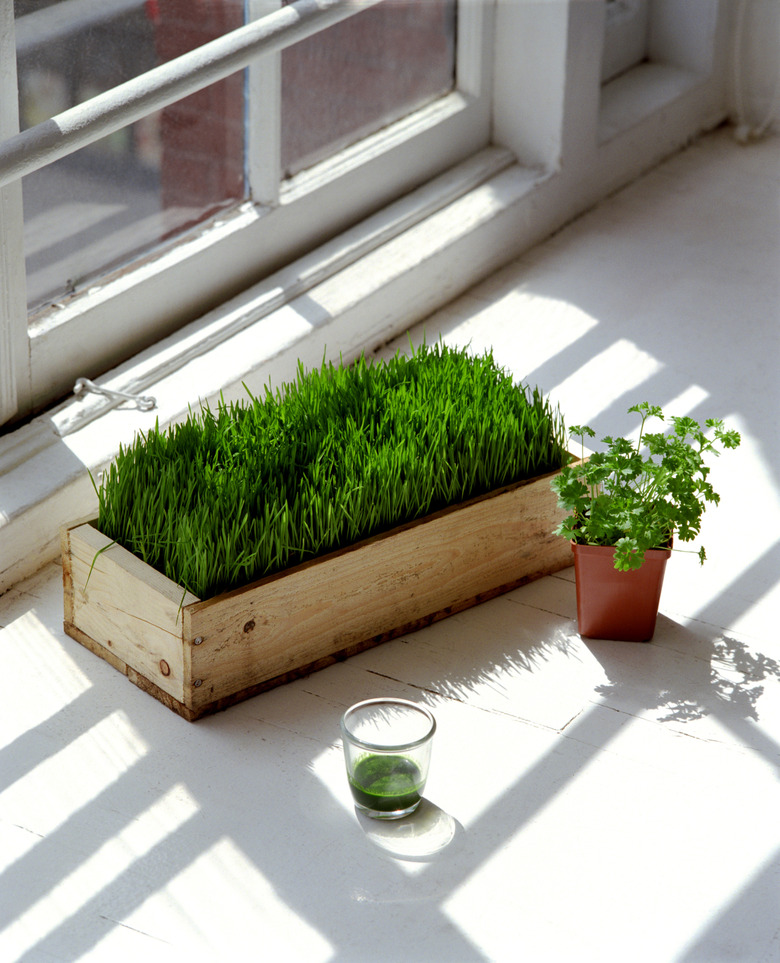Key Differences Between C3, C4 And CAM Photosynthesis
Most people know that plants use photosynthesis to create energy using sunlight. However, the process of photosynthesis varies among plants, depending on their living conditions. Three important types of photosynthesis are C3, C4 and CAM photosynthesis.
TL;DR (Too Long; Didn't Read)
The key difference between C3, C4 and CAM photosynthesis is the way plants extract carbon dioxide from sunlight, which depends largely on the plant's habitat. C3 photosynthesis produces a three-carbon compound via the Calvin cycle while C4 photosynthesis makes an intermediate four-carbon compound that splits into a three-carbon compound for the Calvin cycle. Plants that use CAM photosynthesis gather sunlight during the day and fix carbon dioxide molecules at night.
Photosynthesis
Photosynthesis
In photosynthesis, plants and other organic compounds use the energy from sunlight to extract nutrients from air and water. Photosynthetic organisms feature a green compound known as chlorophyll that contains the enzymes ATP and NADPH. With the energy absorbed from sunlight, photosynthetic compounds convert these enzymes to ADP and NADP+. The plant harnesses the energy from the converted enzymes to extract carbon dioxide from air and water and produce sugar molecules such as glucose. Through photosynthesis, plants excrete waste molecules including oxygen, which makes the air breathable for animals.
C3 Photosynthesis
C3 Photosynthesis
Photosynthetic organisms that undergo C3 photosynthesis begin the process of energy conversion, known as the Calvin cycle, by producing a three-carbon compound called 3-phosphoglyceric acid. This is the reason for the title "C3." C3 photosynthesis is a one-stage process that takes place inside of the chloroplast organelles, which act as storage centers for sunlight energy. The plant uses that energy to combine ATP and NADPH into ordered sugar molecules. Roughly 85 percent of the plants on earth utilize C3 photosynthesis.
C4 Photosynthesis
C4 Photosynthesis
C4 photosynthesis is a two-stage process that produces a four-carbon intermediate compound. The photosynthetic process occurs in the chloroplast of a thin-walled mesophyll cell. Once created, the plant pumps the intermediate compound into a thick-walled bundle sheath cell, where it splits the compound into carbon dioxide and a three-carbon compound. The carbon dioxide then undergoes the Calvin cycle, as in C3 photosynthesis. The benefit of C4 photosynthesis is that it produces a higher concentration of carbon, making C4 organisms more adept at surviving in habitats with low light and water.
CAM Photosynthesis
CAM Photosynthesis
CAM is an abbreviation of crassulacean acid metabolism. In this type of photosynthesis, organisms absorb sunlight energy during the day then use the energy to fix carbon dioxide molecules during the night. During the day, the organism's stomata close up to resist dehydration while the carbon dioxide from the previous night undergoes the Calvin cycle. CAM photosynthesis allows plants to survive in arid climates and therefore is the type of photosynthesis used by cacti and other desert plants. However, non-desert plants like pineapples and epiphyte plants such as orchids also use CAM photosynthesis.
Cite This Article
MLA
Eliot, Alexander. "Key Differences Between C3, C4 And CAM Photosynthesis" sciencing.com, https://www.sciencing.com/key-differences-between-c3-c4-cam-photosynthesis-11383843/. 21 May 2018.
APA
Eliot, Alexander. (2018, May 21). Key Differences Between C3, C4 And CAM Photosynthesis. sciencing.com. Retrieved from https://www.sciencing.com/key-differences-between-c3-c4-cam-photosynthesis-11383843/
Chicago
Eliot, Alexander. Key Differences Between C3, C4 And CAM Photosynthesis last modified August 30, 2022. https://www.sciencing.com/key-differences-between-c3-c4-cam-photosynthesis-11383843/
